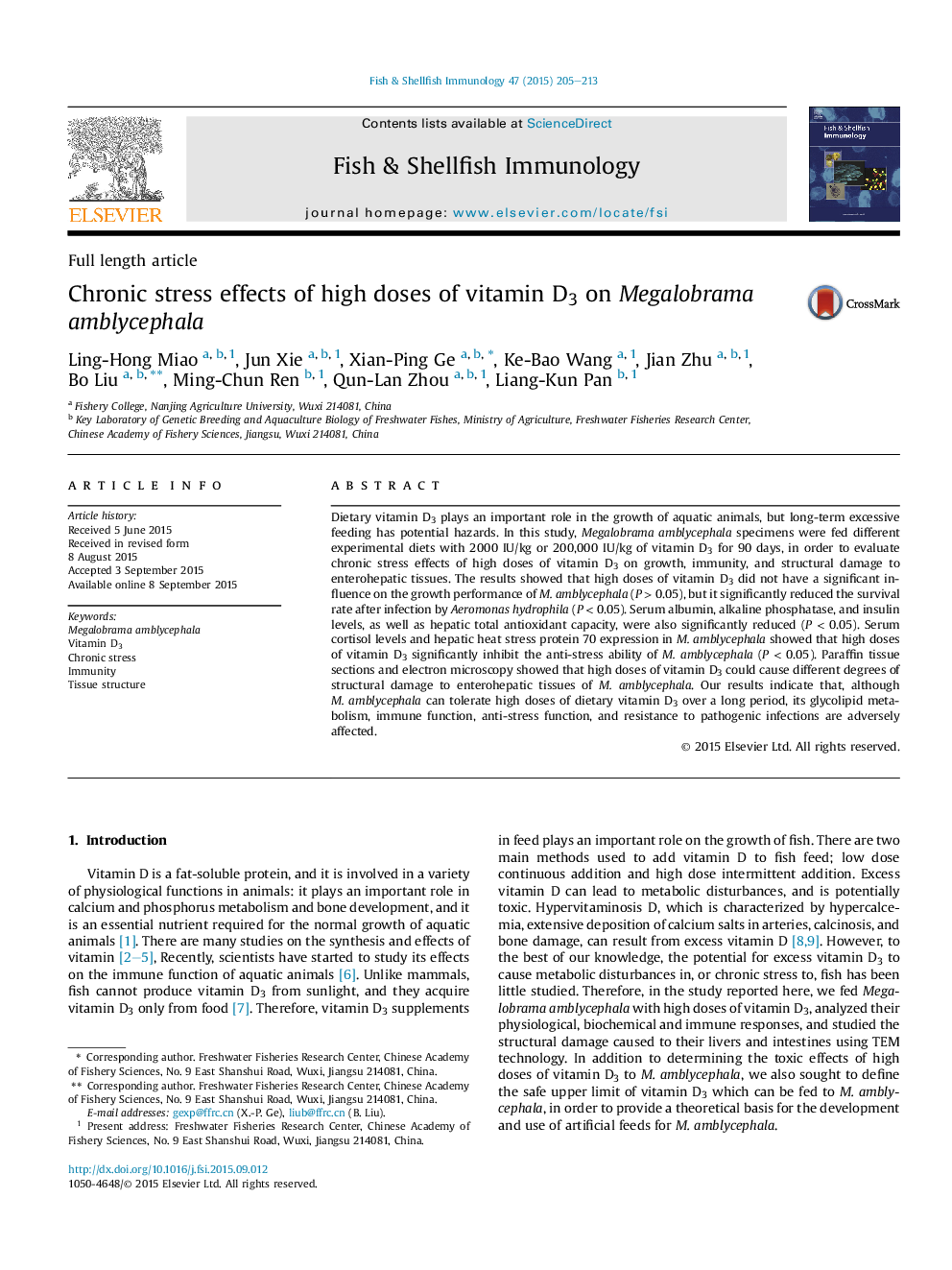| Article ID | Journal | Published Year | Pages | File Type |
|---|---|---|---|---|
| 2431084 | Fish & Shellfish Immunology | 2015 | 9 Pages |
•Vitamin D3 (200,000 IU/kg) did not affect the growth of Megalobrama amblycephala.•High doses of vitamin D3 inhibited glycolipid metabolism in M. amblycephala.•Pathogen resistance and anti-stress ability were also significantly weakened.•Hepatic and intestinal tissues showed different degrees of damage.•Hepatic metabolism and intestinal absorption were affected.
Dietary vitamin D3 plays an important role in the growth of aquatic animals, but long-term excessive feeding has potential hazards. In this study, Megalobrama amblycephala specimens were fed different experimental diets with 2000 IU/kg or 200,000 IU/kg of vitamin D3 for 90 days, in order to evaluate chronic stress effects of high doses of vitamin D3 on growth, immunity, and structural damage to enterohepatic tissues. The results showed that high doses of vitamin D3 did not have a significant influence on the growth performance of M. amblycephala (P > 0.05), but it significantly reduced the survival rate after infection by Aeromonas hydrophila (P < 0.05). Serum albumin, alkaline phosphatase, and insulin levels, as well as hepatic total antioxidant capacity, were also significantly reduced (P < 0.05). Serum cortisol levels and hepatic heat stress protein 70 expression in M. amblycephala showed that high doses of vitamin D3 significantly inhibit the anti-stress ability of M. amblycephala (P < 0.05). Paraffin tissue sections and electron microscopy showed that high doses of vitamin D3 could cause different degrees of structural damage to enterohepatic tissues of M. amblycephala. Our results indicate that, although M. amblycephala can tolerate high doses of dietary vitamin D3 over a long period, its glycolipid metabolism, immune function, anti-stress function, and resistance to pathogenic infections are adversely affected.
